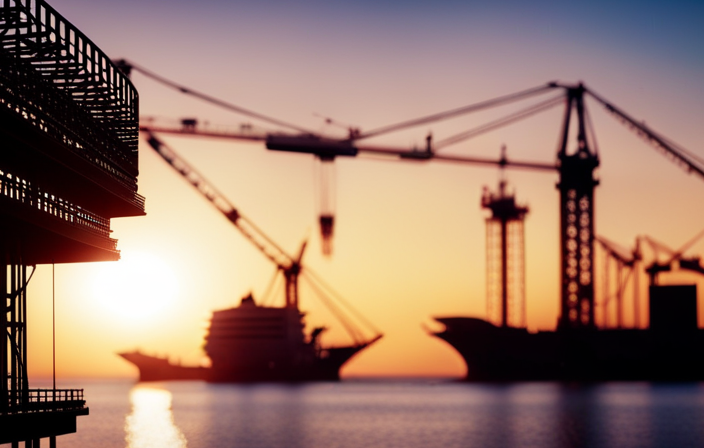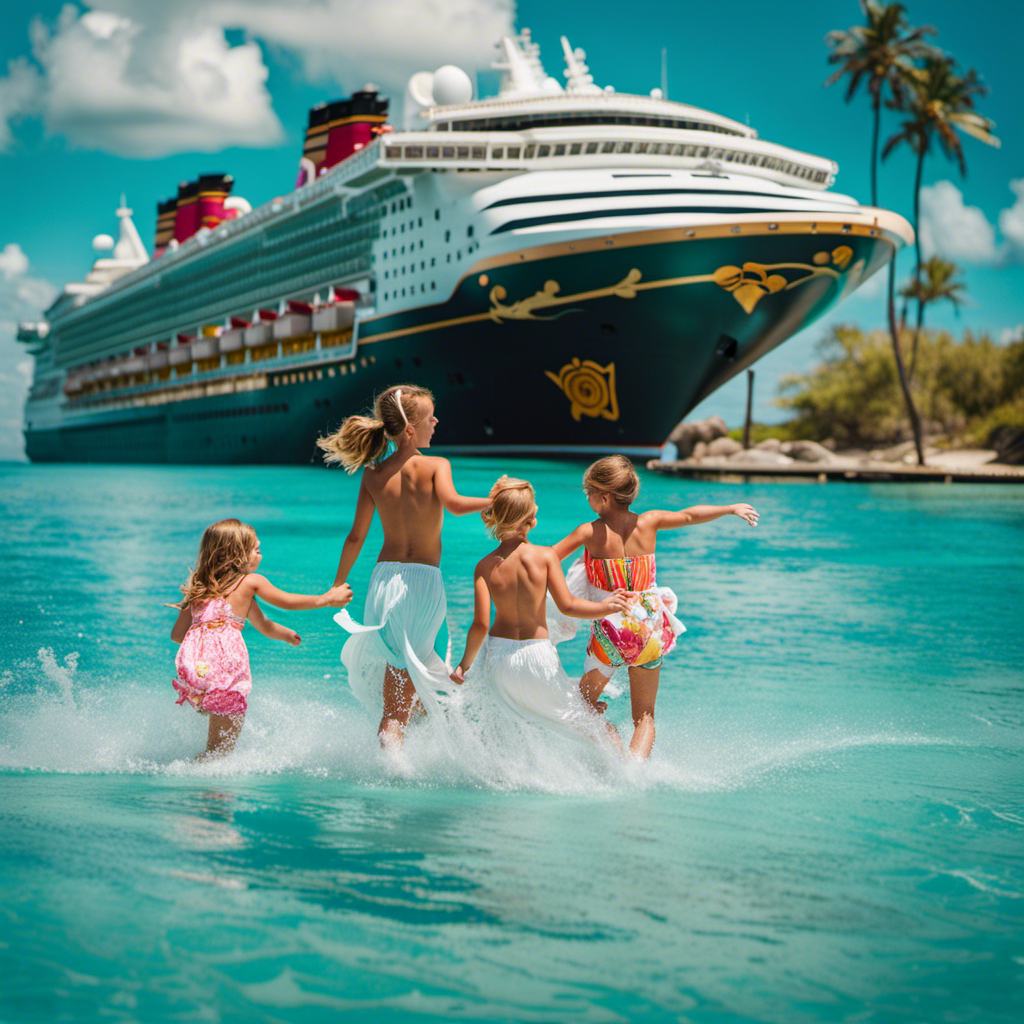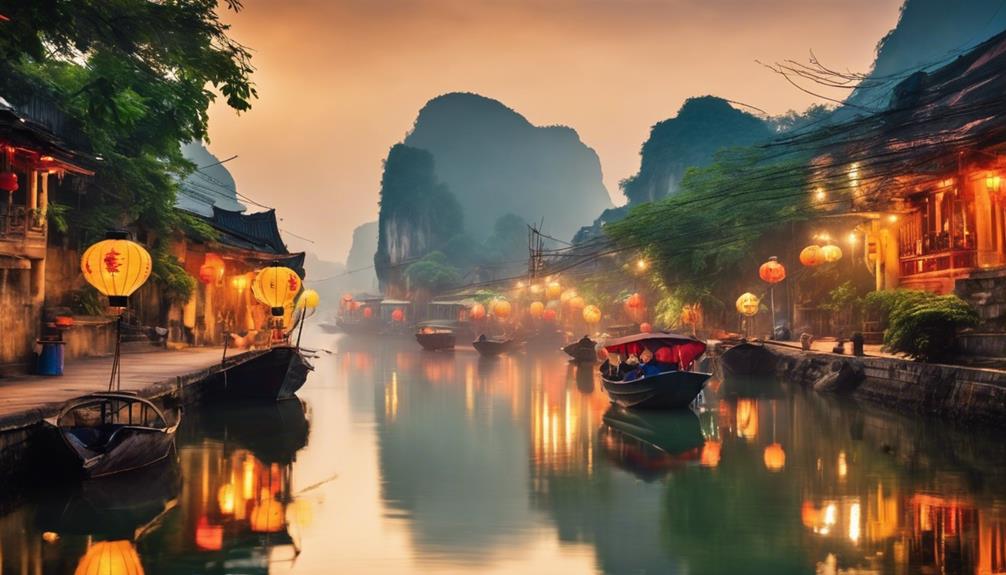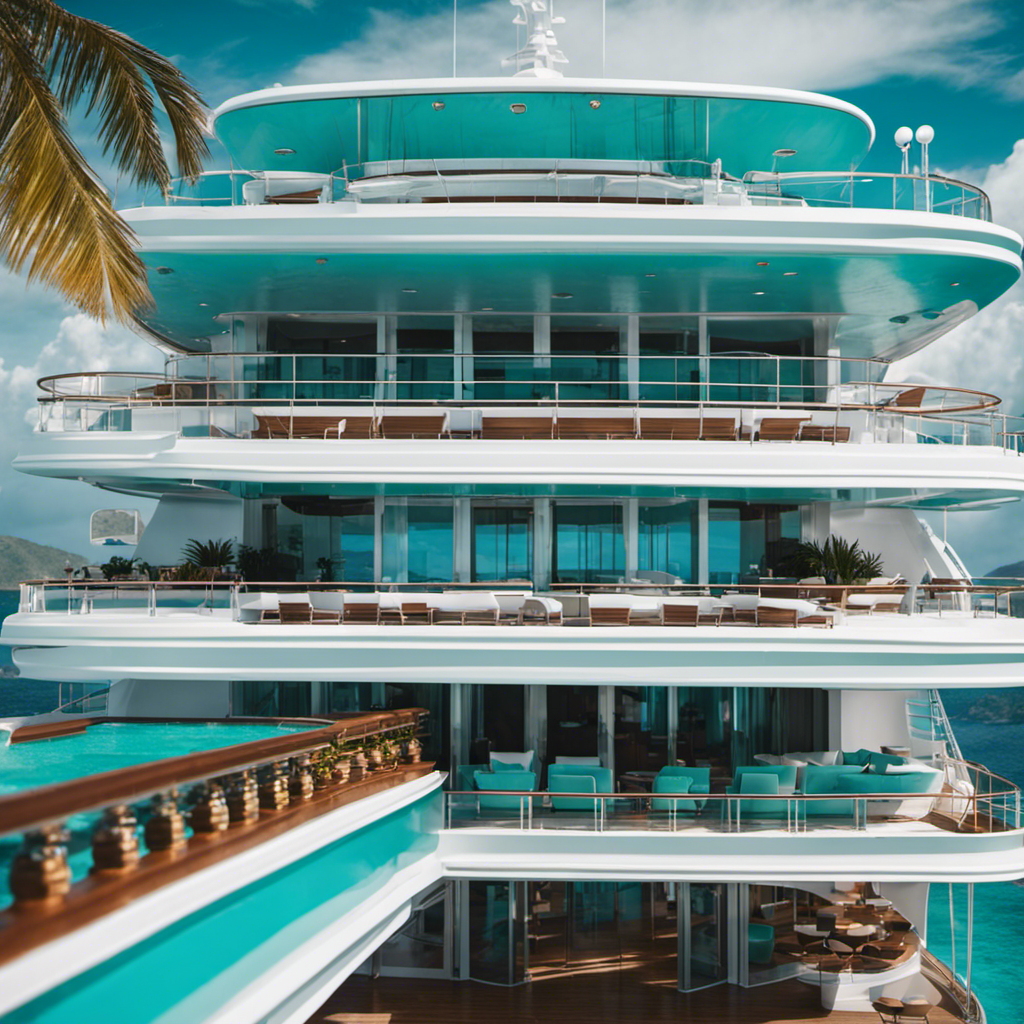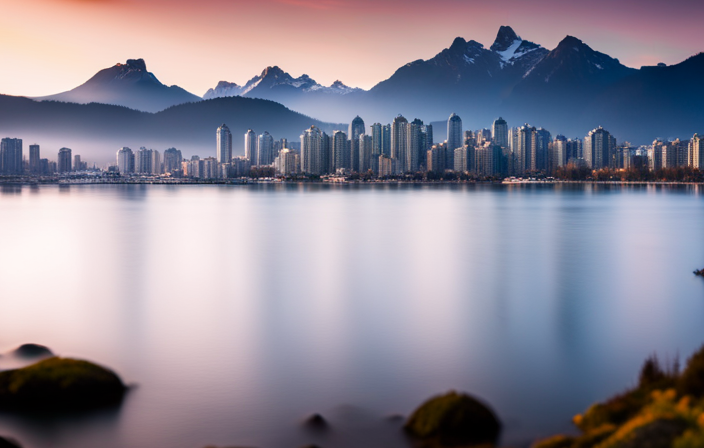Have you ever been amazed by the size and intricacy of cruise ships, and have you ever wondered about how they are built? Let me guide you through the detailed process of creating these impressive vessels.
From the initial design and planning stage to the final launch and delivery, every step is crucial in ensuring the creation of a safe and luxurious floating paradise.
We start by meticulously selecting the materials that will withstand the harsh marine conditions. Then, with precision and expertise, the hull is constructed, followed by the installation of the efficient propulsion system.
As the ship begins to take shape, the superstructure and interior spaces are meticulously built, while rigorous testing and quality assurance measures are carried out.
The interior design and furnishing bring the ship to life, and final inspections and certifications guarantee its seaworthiness.
Join me as we delve into the fascinating world of cruise ship construction, where craftsmanship and innovation converge to create remarkable floating wonders.
Key Takeaways
- Maximizing space utilization and passenger comfort is a crucial consideration in the design of cruise ships, with ergonomics, functionality, ease of movement, and storage all taken into account.
- Careful selection of color schemes and materials is made, with a focus on evoking luxury and elegance, creating a sophisticated ambiance, and prioritizing durability in the cruise ship environment.
- The interior design of cruise ships is seamlessly integrated with the ship’s structure through collaboration between expert designers, architects, and engineers.
- Thorough evaluations during final inspections and certifications ensure the highest quality standards are met in evaluating the interior design and furnishings, as well as the ship’s structure, systems, and equipment. Compliance with safety regulations and industry standards is also verified.
Design and Planning
Designing a cruise ship presents unique challenges and requires a meticulous approach. One of the major design challenges is creating a vessel that can withstand the harsh conditions of the open sea while providing a luxurious and comfortable experience for passengers. Additionally, sustainability considerations are of utmost importance in today’s world.
Cruise ships must be designed with energy-efficient systems and sustainable materials to minimize their environmental impact. The design team must also take into account the ship’s layout, ensuring efficient use of space and optimizing passenger flow.
As we move into the next section, the selection of materials plays a crucial role in bringing the ship’s design to life.
Selection of Materials
When constructing cruise ships, a variety of materials are carefully chosen to ensure durability and aesthetic appeal. Sustainable options are considered to minimize the environmental impact of the manufacturing process.
Aluminum is commonly used for its lightweight properties and resistance to corrosion. It allows for greater fuel efficiency and reduces the overall weight of the ship.
Steel is another popular choice due to its strength and ability to withstand harsh marine conditions.
Fiberglass is used for its versatility and ease of maintenance. It provides a sleek finish and is often used for decorative elements.
These materials are selected based on their specific properties and are integrated into the ship’s design to create a vessel that is both sturdy and visually appealing.
Moving on to the construction of the hull, the selected materials are utilized to form the foundation of the ship’s structure.
Construction of the Hull
Utilizing a combination of carefully chosen materials, the hull of a cruise ship becomes a resilient and majestic fortress, embracing the vastness of the open sea. The construction of the hull involves various techniques and procedures to ensure its strength and durability.
-
Welding: The hull is constructed by welding together steel plates, creating a strong and watertight structure.
-
Coating: To protect the hull from corrosion and fouling, it is coated with specialized paints and anti-fouling agents.
-
Reinforcement: Additional strengthening measures, such as bulkheads and frames, are installed to enhance the structural integrity of the hull.
These construction techniques, combined with regular maintenance procedures like inspection and repairs, help to maintain the hull’s reliability throughout the ship’s lifespan.
As the construction of the hull concludes, the focus then shifts to the installation of the propulsion system.
Installation of the Propulsion System
Now, let’s dive into how the skilled technicians bring the mighty propulsion system to life on your majestic vessel.
The installation of the propulsion system is a crucial step in the construction of a cruise ship as it determines its efficiency and performance on the open seas. The propulsion system consists of engines, propellers, and other essential components that work together to generate the necessary power to move the ship forward.
These systems are carefully installed and aligned to ensure optimal performance.
Additionally, the maintenance and repair of the propulsion system are of utmost importance to guarantee the safety and reliability of the ship. Regular inspections and servicing are conducted to identify and address any issues promptly.
As we move forward into the next section about building the superstructure and interior spaces, the propulsion system serves as the heart of the ship, propelling it towards completion.
Building the Superstructure and Interior Spaces
The construction process continues by crafting the superstructure and interior spaces, enhancing the overall design and functionality of the majestic vessel.
Building the superstructure involves assembling the main structural components, such as the decks, hull, and bulkheads. Construction techniques, like welding and riveting, are employed to ensure the strength and integrity of the structure.
Interior spaces are meticulously designed and built to accommodate various amenities and facilities, including cabins, dining areas, entertainment venues, and recreational areas. The building process incorporates innovative materials and technologies to create stylish and comfortable spaces for passengers. From the layout of the cabins to the arrangement of public spaces, every detail is carefully considered to provide an exceptional onboard experience.
As the construction of the superstructure and interior spaces nears completion, the focus shifts to the installation of mechanical and electrical systems.
Installation of Mechanical and Electrical Systems
Crafting the superstructure and interior spaces involves the meticulous installation of advanced mechanical and electrical systems, adding a level of sophistication to the construction process.
The installation of mechanical systems is a critical step in ensuring the functionality and efficiency of the cruise ship. This includes the installation of propulsion systems, air conditioning, ventilation, and plumbing systems. Each component must be carefully positioned and connected to ensure seamless operation.
Additionally, the installation of electrical systems is equally important. This involves the wiring of the ship, including lighting, communication systems, and navigation equipment. Highly skilled technicians work diligently to ensure that all systems are integrated and functioning properly.
Once the mechanical and electrical systems installation is complete, the ship moves on to the next phase of testing and quality assurance, where each system is rigorously examined to guarantee optimal performance.
Testing and Quality Assurance
During the testing and quality assurance phase, highly skilled technicians ensure that all systems on the ship are thoroughly examined for optimal performance.
Various testing processes are employed to identify any potential issues and ensure that the mechanical and electrical systems are functioning correctly. These processes include conducting stress tests, where different scenarios are simulated to assess the system’s ability to handle different conditions.
Additionally, quality control measures are implemented to ensure that all components meet the necessary standards. This involves inspecting and testing each individual component before installation to ensure its reliability.
The goal of these testing processes and quality control measures is to guarantee the safety and efficiency of the cruise ship’s systems.
Moving forward to the subsequent section about interior design and furnishing, attention to detail is equally important in creating a comfortable and luxurious environment for the passengers.
Interior Design and Furnishing
To create an opulent and inviting atmosphere on board, we give meticulous attention to interior design and furnishing. The furniture arrangement plays a crucial role in maximizing space utilization and ensuring passenger comfort. We carefully consider the ergonomics and functionality of each piece, taking into account factors such as ease of movement and storage.
Color schemes are carefully selected to evoke a sense of luxury and elegance. Warm tones and rich textures create a sophisticated ambiance. Additionally, we pay close attention to the materials used, prioritizing durability and longevity to withstand the demands of a cruise ship environment.
Our team of expert designers works closely with architects and engineers to seamlessly integrate the interior design with the ship’s structure. As we move into the final inspections and certifications, every aspect of the interior design and furnishing is thoroughly evaluated to ensure the highest quality standards are met.
Final Inspections and Certifications
After the meticulous attention given to interior design and furnishing, the final inspections and certifications ensure that every aspect meets the highest quality standards. The final inspections involve a thorough examination of the ship’s structure, systems, and equipment to ensure they comply with safety regulations and industry standards. This process includes checking the integrity of the hull, verifying the functionality of the propulsion system, and inspecting the electrical and plumbing systems. Additionally, the ship’s safety features, such as lifeboats and fire suppression systems, are meticulously tested to ensure they are fully operational. Once all inspections are completed and any necessary adjustments are made, the ship undergoes a certification process. This involves obtaining various certifications from regulatory bodies to confirm compliance with international maritime standards. These certifications cover areas such as safety, environmental sustainability, and passenger comfort. With the final inspections and certifications completed, the ship is now ready for the next phase: launch and delivery, where it will embark on its maiden voyage.
Launch and Delivery
After final inspections and certifications are completed, it’s time for the highly anticipated launch and delivery of the cruise ship. As a shipbuilder, this is the moment I’ve been waiting for. The launch marks the culmination of months, and sometimes years, of hard work and dedication.
During the launch, the ship is carefully maneuvered into the water for the very first time. This is a delicate process that requires precision and expertise to ensure a successful transition from the shipyard to the open sea. Once in the water, the ship undergoes a series of tests and trials to ensure that all systems are functioning properly.
After the successful launch, the ship is delivered to the cruise line company. This is an exciting moment as the shipyard officially hands over the vessel to its new owners. The cruise ship is now ready to embark on its maiden voyage, bringing joy and adventure to thousands of passengers.
Markdown List:
- Launching the ship into the water.
- Conducting tests and trials post-launch.
- Delivering the ship to the cruise line company.
Frequently Asked Questions
How long does it typically take to build a cruise ship from start to finish?
Typically, it takes several years to construct a cruise ship from start to finish. The construction timeline depends on factors like the size and complexity of the vessel. Various materials, such as steel and aluminum, are used in the process.
What are some of the challenges faced during the construction process of a cruise ship?
During the construction process of a cruise ship, there are various challenges to overcome. These challenges include meeting shipyard regulations, ensuring compliance with safety standards, managing the complexity of the construction process, and coordinating the work of multiple teams.
How are cruise ships transported from the shipyard to the water for launch?
Transporting cruise ships from shipyards to the water for launch involves various transportation methods. Typically, ships are transported using specialized heavy-lift ships or floating dry docks. The launching process involves carefully flooding the dry dock to allow the ship to float.
How many workers are typically involved in the construction of a cruise ship?
In the construction of a cruise ship, the number of construction workers involved can vary depending on the size and complexity of the vessel. The construction process timeline typically spans several months to years.
Are there any regulations or standards that govern the construction of cruise ships?
There are numerous regulations and safety standards that govern the construction of cruise ships. These ensure that the ships are built to withstand extreme conditions and provide a safe environment for passengers and crew.
Conclusion
In conclusion, the process of making cruise ships involves meticulous design, careful material selection, and precise construction techniques.
It is fascinating to note that a typical cruise ship can take anywhere from 2 to 4 years to build, depending on its size and complexity.
This staggering statistic showcases the immense amount of time and effort that goes into creating these floating marvels of engineering.
From the initial planning stages to the final inspections and certifications, every step is taken to ensure that cruise ships are not only functional and safe but also luxurious and visually stunning.
Claire, a creative soul with an unquenchable thirst for storytelling, is an integral part of the Voyager Info team. As a dedicated writer, she weaves captivating narratives that transport readers to enchanting cruise destinations and beyond.
Claire’s love affair with writing began at an early age when she discovered the magic of words and their ability to craft worlds and emotions. Her innate curiosity led her to explore various literary genres, but it was travel writing that truly captured her heart. Drawing inspiration from her own globetrotting adventures and encounters with diverse cultures, Claire embarked on a journey to become a travel writer par excellence.

